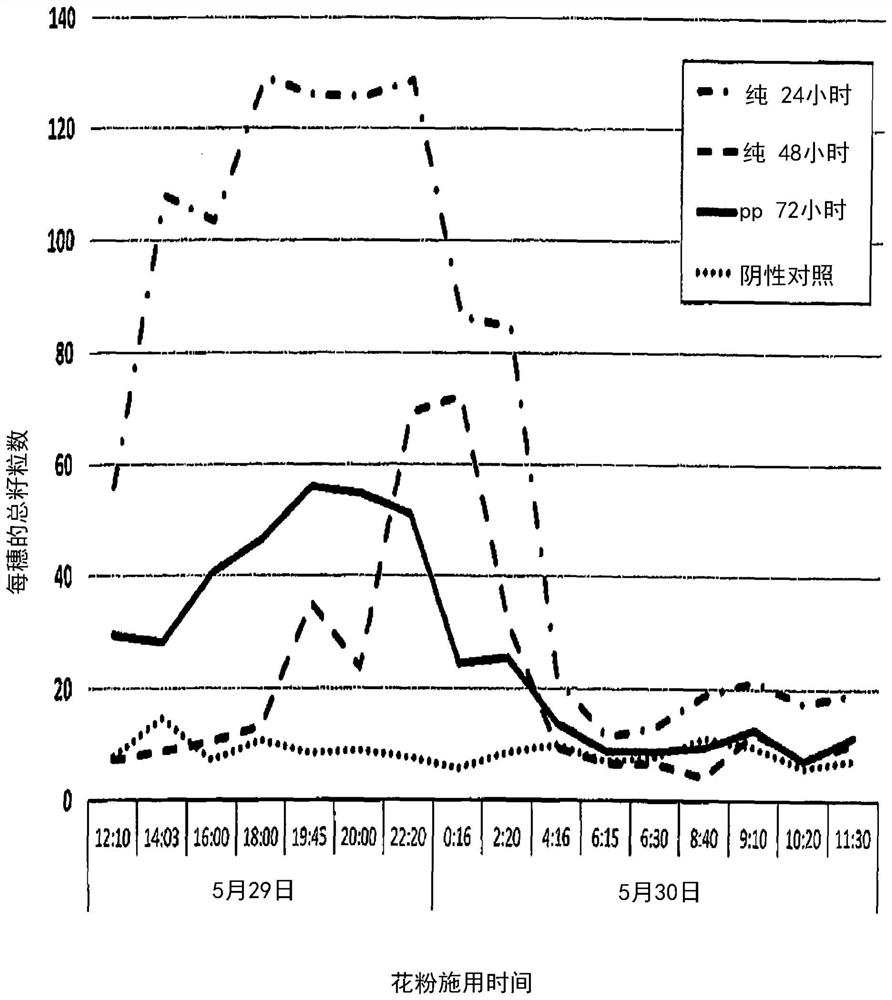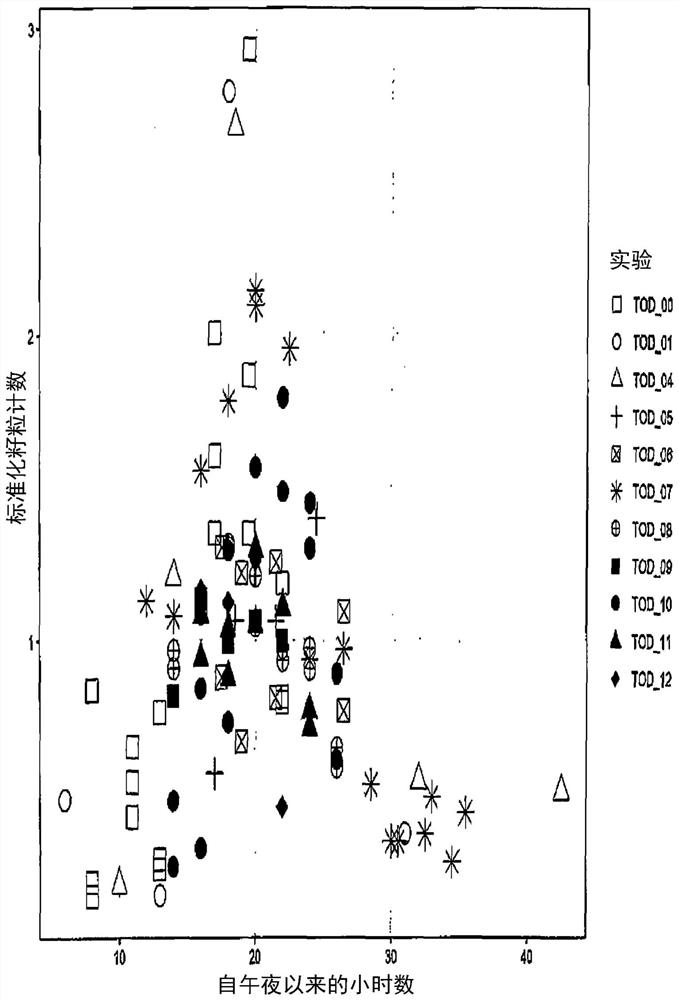Methods and systems for grain crop pollination time
A crop, time technology, applied in the fields of botanical equipment and methods, applications, animal feed, etc., can solve the problem of high self-pollination rate
- Summary
- Abstract
- Description
- Claims
- Application Information
AI Technical Summary
Problems solved by technology
Method used
Image
Examples
Embodiment 1
[0065]In May 2019, a study was conducted using corn on a farm located in Texas, USA. Previous studies conducted by the inventors have shown that greater fertilization success can be achieved at time points outside the time when plants naturally release pollen, where fertilization occurs only during the morning time window. This experiment was designed to test the productivity of pollination performed over a 24-hour period while closely tracking changes in various environmental conditions. These conditions include temperature, humidity, wind speed, vapor pressure, vapor pressure differential, sun intensity, and UV intensity.
[0066] Processing is performed every two hours from 8pm (20:00) of one day to 10pm (22:00) of the next day. Each treatment was repeated 3 times, and each treatment had 12 spikes. Repeat in different rows to eliminate interference from field variations. Silks were selected prior to pollination to ensure plants were at a similar point of development. Th...
Embodiment 2
[0073] During 2019 and 2020, a series of 11 experiments similar to those outlined in Example 1 were conducted on maize plants in various locations, including Iowa, Texas, and Puerto Rico. The experiments were carried out at different times of the year, but in all cases the environmental variables were measured throughout the experimental period. These variables include: temperature, humidity, wind speed, gust speed, dew point, wind chill, wind direction and barometric pressure readings. Also, watch for precipitation. Calculate the vapor pressure difference over the time frame of the entire experiment. Fresh pollen or preserved pollen or both were applied to target corn plants at different time points over a set period of time and kernel counts were obtained for the resulting ears of corn. The experimental protocol was essentially as described in Example 1.
[0074] These experiments were performed to demonstrate factors such as temperature, relative humidity and vapor press...
PUM
 Login to View More
Login to View More Abstract
Description
Claims
Application Information
 Login to View More
Login to View More - R&D
- Intellectual Property
- Life Sciences
- Materials
- Tech Scout
- Unparalleled Data Quality
- Higher Quality Content
- 60% Fewer Hallucinations
Browse by: Latest US Patents, China's latest patents, Technical Efficacy Thesaurus, Application Domain, Technology Topic, Popular Technical Reports.
© 2025 PatSnap. All rights reserved.Legal|Privacy policy|Modern Slavery Act Transparency Statement|Sitemap|About US| Contact US: help@patsnap.com



